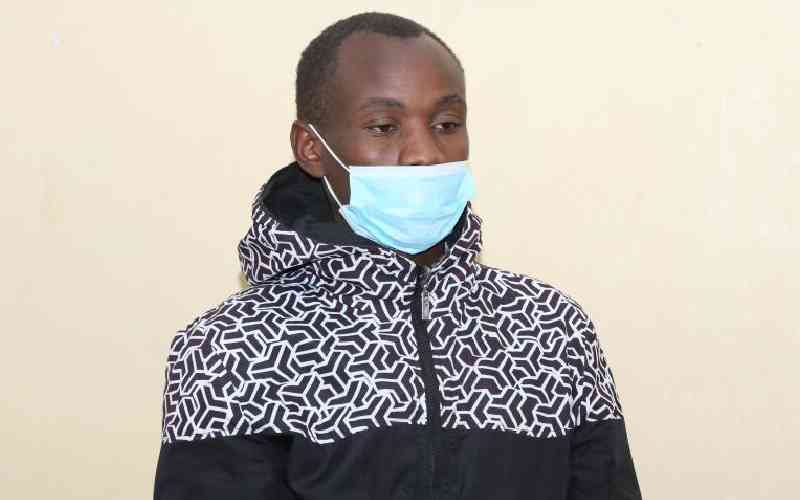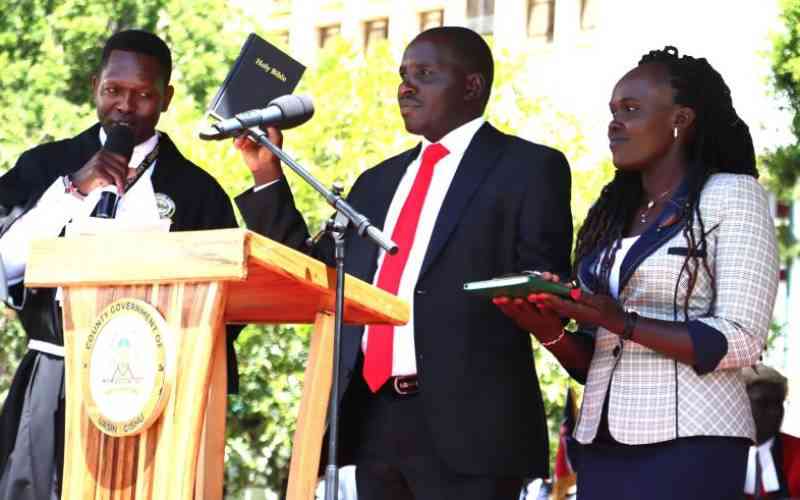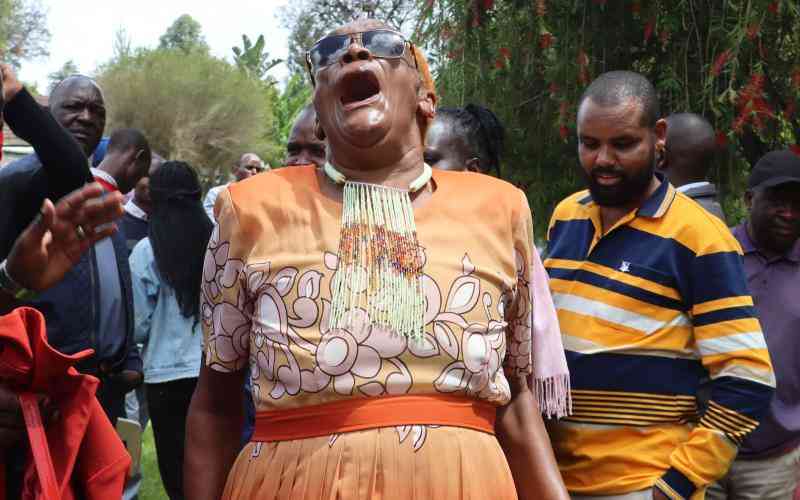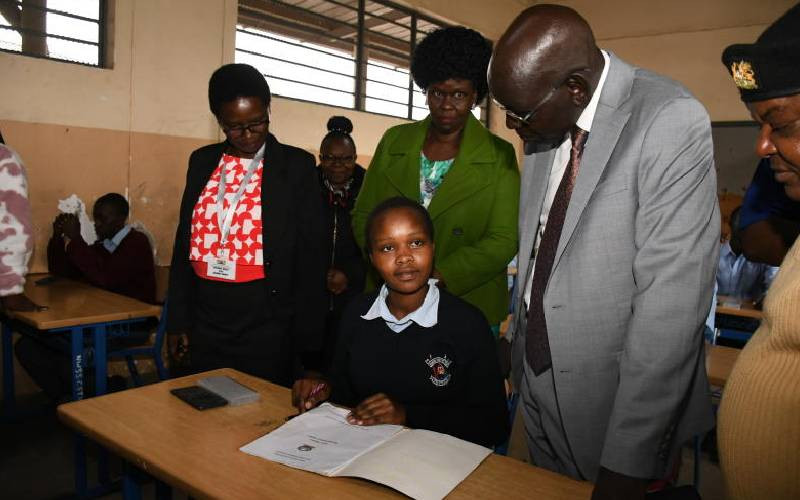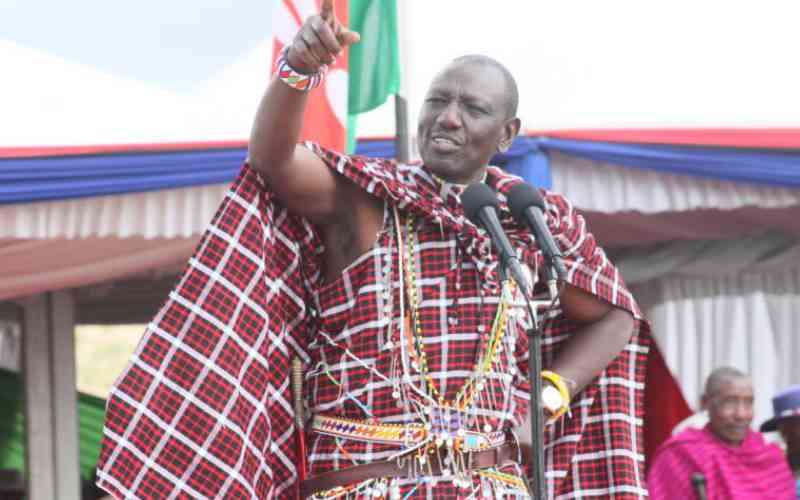
During the just-ended inaugural Maa Cultural Festival, President William Ruto, his deputy Rigathi Gachagua, and Prime Cabinet Secretary Musalia Mudavadi stole the show.
Dressed in full Maasai regalia, the three leaders gelled in with thousands of morans gathered for the festival.
And now, Maasai traditional elders and culture enthusiasts have revealed that the attire donned by the President was unique and had special meaning to it.
John Tiapati, a culture enthusiast says clothing style and colours change depending on age and social position in the Maa culture.
"Traditional Maasai beaded collars use colours to identify their age, social status, marital status, clan, and more," says Tiapati.
The most visually striking aspect of Maasai culture is the red colour and beaded jewellery.
Although many have noted the similarity between Maasai attire and Scottish tartans, no one is certain where the classic plaid pattern originated.
- Ruto remains mute as healthcare crisis worsens
- Government calls on KMPDU to end strike
- Ruto going against KK manifesto, unions say
- Go back to work, Ruto tells striking doctors
Keep Reading
"Red is the most important colour. It symbolises courage, bravery, and strength," Tiapati explains, adding that the Maasai also believe red scares off predators like lions.
Red also represents unity within the Maasai culture because livestock are slaughtered when communities come together in celebration, he says.
White is the colour of cow's milk which represents energy and purity; green symbolises health and well-being; blue is the colour of the sky which provides rain, while yellow is the colour of the sun.
Orange, which also features heavily in Maa jewellery represents hospitality, friendship, and generosity, while black symbolises the people and the hardships they must endure, says Tiapati.
While decoding the fabric of every age and stage in the Maasai culture, Tiapati says morans or warriors wear two pieces of cloth, one across the right shoulder that drapes down the body with a belt around the waist, and the other piece around the shoulder.
Shuka, a check-board pattern cloth like that which was worn by President Ruto, Gachagua and Mudavadi, is widely identified with the Maasai in Kenya and Tanzania, says Tiapati.
"The president's dress code in Maasai and especially the colour of the shuka was very impressive and it is a win for our community," said Prince Taga of Mara Napa camp in Maasai Mara.
The President's attire was accompanied by the traditional black rod, a sword on his waist, and articulate beaded jewellery he wore on his neck, around the waist, and arms.
President Ruto, who identified himself as part of the community, appreciated the Maa people for preserving their culture.
"The Maa Festival will be an annual event fully sponsored by the Government of the Republic of Kenya as a national celebration to give a national impetus and heritage," said the President.
He also handed over a certificate from The United Nations Educational, Scientific and Cultural Organization (Unesco) for Maa Intangible Rite of Passage, which is now considered a world heritage and should be preserved for future generations.
"We thank the three top leaders for being part of us, in dressing like us, dining with us, and actually for recognising the Maasai culture as a national heritage," said Narok County Governor Patrick Ole Ntutu.
Deputy President Gachagua, who closed the fete on Thursday, lauded the Maasai community for uplifting Kenya to international status through their rich culture.
"You have given our nation and the continent an indelible identity through your distinct regalia intertwined with the unique culture, which you have preserved and sustained through generations; this is the real magical Kenya," said the DP.
Other leaders who donned the cultural attire include UDA Secretary General Cleophas Malala and Tourism Cabinet Secretary Peninah Malonza.
 The Standard Group Plc is a multi-media organization with investments in media platforms spanning newspaper print
operations, television, radio broadcasting, digital and online services. The Standard Group is recognized as a
leading multi-media house in Kenya with a key influence in matters of national and international interest.
The Standard Group Plc is a multi-media organization with investments in media platforms spanning newspaper print
operations, television, radio broadcasting, digital and online services. The Standard Group is recognized as a
leading multi-media house in Kenya with a key influence in matters of national and international interest.

